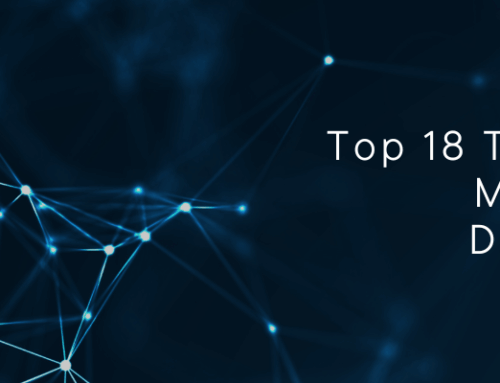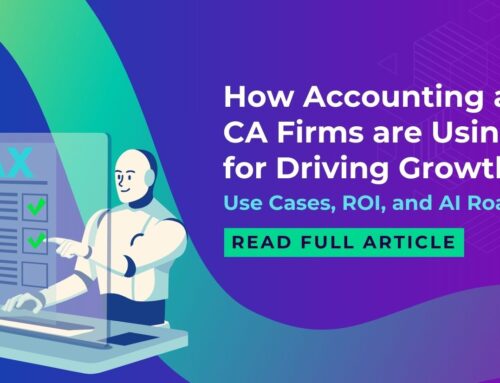In today’s data-driven world, extracting information swiftly and accurately is a cornerstone of business success. This comparative study illuminates why Artificial Intelligence (AI) stands as the superior choice for data extraction when pitted against Optical Character Recognition (OCR). By delving into the depths of these technologies, we uncover the reasons why AI outshines OCR in delivering efficiency, versatility, and precision.
Data Extraction using AI Techniques
Data extraction using AI techniques mainly include machine learning algorithms to recognize and extract data from various sources. AI can handle unstructured data, making it highly versatile. Some key techniquesinclude:
- Natural Language Processing (NLP): NLP algorithms process text data to extract information, such as named entities, sentiment analysis, and topic modeling.
- Computer Vision: AI-powered computer vision techniques can extract information from images, videos, and scanned documents.
- Speech Recognition: AI can convert spoken language into text, enabling data extraction from audio sources.
Data Extraction using OCR:
In the context of data extraction using OCR (Optical Character Recognition), OCR typically begins by converting documents such as PDFs into images. The Data extraction process using OCR includes following steps:
Document Scanning or Conversion: OCR can start with either scanning physical documents or converting digital documents (e.g., PDFs, scanned images) into image files. This step is necessary to create a visual representation of the text.
Image Preprocessing:The images may undergo preprocessing steps such as noise reduction, image enhancement, and deskewing to ensure optimal recognition accuracy.
Text Detection:OCR algorithms then identify regions within the images where text is present. This involves detecting text blocks, lines, and individual characters.
Character Recognition:The recognized text is then subjected to character recognition, where the OCR software attempts to identify the characters within the text regions. This involves pattern recognition and matching techniques.
Text Output:After successful character recognition, the OCR software produces machine-encoded text from the images. This output text can be stored in various formats like plain text, Word documents, or structured data depending on the OCR software’s capabilities and configuration.
Post-processing:Depending on the specific use case, there may be additional post-processing steps to clean and format the extracted text, such as removing extra spaces or correcting recognized errors.
It’s important to notethat whileOCR is effective for extracting text from scanned documents and images, it primarily focuses on character recognition and doesn’t possessthe semantic understanding and versatility that Artificial Intelligence (AI) offers for data extraction from diverse sources.AI techniques can handle not only text but also images, audio, and unstructured data, making them more suitable for complex and varied data extraction tasks.
Why AI is Better than OCR for Data Extraction
| Criteria | AI for Data Extraction | OCR for Data Extraction |
| Data Types Supported | AI can handle various data types, including text, images, audio, and more. | OCR primarily deals with text extraction from images or scanned documents. |
| Accuracy | AI offers higher accuracy, especially for unstructured data, thanks to machine learning models. | OCR accuracy can vary based on the quality of the input document and handwriting |
| Flexibility | AI is highly adaptable and can be trained for specific tasks, making it versatile. | OCR is specialized in text extraction and may require additional tools for more complex tasks. |
| Learning Curve | Implementing AI may require expertise in machine learning and data preprocessing. | OCR is generally easier to set up and use, but it may have limitations in handling complex layouts. |
| Language Support | AI models can support multiple languages and adapt to new languages with training. | OCR may have limited language support and may require specific versions for different languages. |
| Use Cases | AI can be applied to a wide range of use cases, including sentiment analysis, document classification, and more. | OCR is primarily used for document digitization, such as invoices, receipts, and forms. |
Use Cases using AI Techniques for Data Extraction
AI techniques for data extraction find applications in various industries:
- Finance: Automating document processing for invoices, receipts, and financial reports.
- Healthcare: Extracting patient data from medical records for analysis and decision support.
- Retail: Analyzing customer reviews and social media data for market insights.
- Legal: Automating contract analysis and extracting key legal terms from documents.
These are some of the use cases where AI techniques are beneficial for Data Extraction, and it’s important to note that there are numerous other applications as well.
Tools and Technologies used in AI Techniques for Data Extraction:
- Machine Learning Models: Utilize pre-trained models like BERT, GPT, and custom models for specific tasks.
- Natural Language Processing Libraries:Python libraries like NLTK, spaCy, and Transformers for text data processing.
- Computer Vision Frameworks: OpenCV and TensorFlow for image and video data analysis.
- Speech Recognition APIs: Services like Google Speech-to-Text or Microsoft Azure Speech Service for audio data processing.
- Data Preprocessing: Techniques like data cleaning, tokenization, and feature engineering are essential for accurate data extraction.
- Data Labeling and Annotation: Human annotators or crowdsourcing platforms can help create labeled datasets for training AI models.
In conclusion, while both AI techniques and OCR have their strengths, AI is often the preferred choice for businesses looking to extract and analyze data from diverse sources, especially when dealing with unstructured data and complex tasks. However, the choice between AI and OCR ultimately depends on the specific requirements and use cases of your business.









